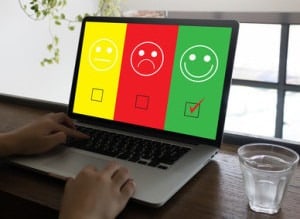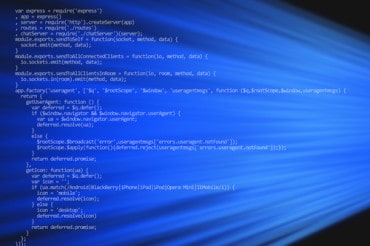
Real-time employee feedback can provide ongoing, instantaneous feedback to employees, provide immediate instruction or reward – versus waiting 12 months for performance reviews.
Despite all the technology taking root in our workplaces, average worker productivity growth has been slow to non-existent over the past few decades. Employee productivity depends on many factors, from macro-economic trends to skills adoption. Many human resource authorities believe additional key factors are workers’ motivation and sense of accomplishment in their work. Feedback is a tool for addressing these intrinsic factors – but within many organizations, has been too infrequent and dysfunctional to be meaningful.
Enter the digital revolution. There’s a growing school of thought that technology can provide ongoing, real-time employees feedback and provide immediate instruction or reward over the course of the day – versus waiting six or 12 months for regular performance reviews.
For example, Goldman Sachs recently announced it will be rolling out real-time feedback technology for its 35,000 employees. As the company’s management put it, the goal is to add “more frequent check-ins to supplement the traditionally high stakes annual review process. Our employees want to know where they stand at all times.” That’s a very reasonable – and potentially productivity-boosting – request.
[Related: Happy and Productive at Your Job? HR Wants to Know — Right Now ]
Payal Vasudeva, Tim Good and Johan Eerenstein, all with Accenture, agree that real-time performance management can boost the productivity of many organizations, and have data to back up this assertion. Accenture’s research has found, for example, that providing employees with real-time performance data is ranked among the top-three changes that would most improve workforce performance.
Real-time employee feedback looks forward
Traditional performance management approaches – the once or twice-a-year appraisal – can’t keep up with today’s competitive, digital economy and workplace “because they are not sufficiently tailored to individuals’ goals,” Vasudeva and his co-authors write. “They cannot briskly match the right people with the right business needs.” Plus, traditional performance monitoring tends to look backward, not forward.
As with many things these days, the data that is being generate from all corners of enterprises can tell a story. “Digital tools, technologies and intelligent machines can transform people development, enabling supervisors to trace contributions from individuals and teams with more accuracy and solid data,” the Accenture team writes. “They can also help supervisors measure outcomes with better transparency and impact because evaluations can be more closely linked in time to the particular performance being evaluated.” In other words, an employee undertaking a task can be assisted with coaching or redirection right away, versus finding out eight months later that he or she was doing things all wrong.
[ Related: Making Customer Call Centers Productive and Painless ]
Data-driven, real-time performance feedback is also fairer than traditional methods as well, as it frees evaluation from the personal biases of supervisors. “It makes the evaluation process more open, fair and transparent, based on clear and understandable data,” Vasudeva and his co-authors say.
People are open to the potential of real-time performance tracking. The Accenture study finds 67 percent of employees and leaders view employee performance tracking technologies as a “positive change,” while only 13 percent view them negatively. In addition, 71 percent of respondents say such technology would improve performance management.





























